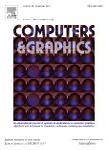版权所有:内蒙古大学图书馆 技术提供:维普资讯• 智图
内蒙古自治区呼和浩特市赛罕区大学西街235号 邮编: 010021

作者机构:Taiyuan Univ Sci & Technol Sch Comp Sci & Technol Taiyuan 030024 Peoples R China
出 版 物:《COMPUTERS & GRAPHICS-UK》 (Comput Graphics)
年 卷 期:2025年第126卷
核心收录:
学科分类:08[工学] 0835[工学-软件工程] 0812[工学-计算机科学与技术(可授工学、理学学位)]
基 金:Shanxi Province Natural Science Foundation National Natural Science Foundation of China
主 题:Weakly supervised semantic segmentation Ancient architecture Multiscale Adaptive fusion Spectral clustering
摘 要:Existing methods of weakly supervised semantic segmentation for ancient architecture have several limitations including difficulty in capturing decorative details and achieving precise segmentation boundaries due to the many details and complex shapes of these structures. To mitigate the effect of the above issues in ancient architecture images, this paper proposes a method for weakly supervised semantic segmentation of ancient architecture based on multiscale adaptive fusion and spectral clustering. Specifically, low-level features are able to capture localized details in an image, which helps to identify small objects. In contrast, highlevel features can capture the overall shape of an object, making them more effective in recognizing large objects. We use a gating mechanism to adaptively fuse high-level and low-level features in order to retain objects of different sizes. Additionally, by employing spectral clustering, pixels in ancient architectural images can be divided into different regions based on their feature similarities. These regions serve as processing units, providing precise boundaries for class activation map (CAM) and improving segmentation accuracy. Experimental results on the Ancient Architecture, Baroque Architecture, MS COCO 2014 and PASCAL VOC 2012 datasets show that the method outperforms the existing weakly supervised methods, achieving 46.9%, 55.8%, 69.9% and 38.3% in Mean Intersection Over Union (MIOU), respectively. The code is available at https://***/hao530/***